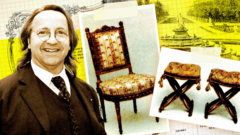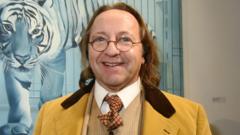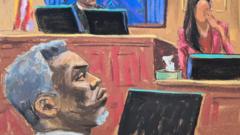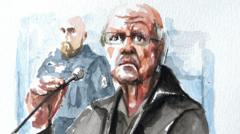A major fraud case centered on counterfeit 18th-century chairs that shook the French antiques market has captured the attention of the nation, revealing the depths of deception within the art world.
Furniture Fraud Scandal Rocks French Antiques Market

Furniture Fraud Scandal Rocks French Antiques Market
Scandal involving forged royal furniture deceives prestigious institutions and wealthy collectors.
In the early 2010s, a pair of ornate chairs purportedly once gracing the grounds of the Palace of Versailles appeared in the French antiques scene. Thought to have been fashioned for Marie Antoinette, the last queen of France's Ancien Régime, the chairs bore the mark of celebrated cabinet maker Nicolas-Quinibert Foliot. Declared “national treasures” by the French government in 2013 due to their historical significance, the chairs were initially offered to Versailles. However, they were ultimately acquired by Qatari Prince Mohammed bin Hamad Al Thani for a staggering €2 million (£1.67 million) after the palace deemed the price excessive.
Around this time, numerous other items ostensibly from the same royal era began surfacing on the market. These include chairs claimed to have been used by Madame du Barry, King Louis XV's mistress, and other royal figures. The palace seized many of these items for its collection, leading to further intrigue.
However, in 2016, the excitement turned sour when it was discovered that these extravagant pieces were mere forgeries. Central to the scandal were prominent antiques expert Georges "Bill" Pallot and award-winning cabinetmaker Bruno Desnoues, both of whom faced trial for fraud and money laundering after a lengthy investigation.
Pallot, reputation as the foremost authority on French 18th-century chairs, was tasked with authenticating historical items, while Desnoues garnered accolades for his craftsmanship at Versailles. The duo confessed that their fraudulent scheme began in 2007 as a harmless experiment to replicate an armchair associated with Madame du Barry. Their success in convincing experts led them down the path of mass production of counterfeit chairs.
The court learned that Pallot sourced low-cost wood and Desnoues artfully aged the materials at his workshop to create the convincing replicas. As a result, the pair managed to sell their fakes to middlemen, galleries, and eventually to esteemed auction houses, resulting in estimated total profits of over €3 million.
In a twist of irony, their fraudulent association exploited Pallot’s deep knowledge of Versailles' inventories, enabling them to craft fakes that seemed real down to period labels and inventory numbers. Prosecutors asserted their deception tarnished the reputation of esteemed institutions.
The fraudulent operation surfaced when authorities took notice of the lavish lifestyle of a middleman connected to the scam, which eventually linked to Pallot and Desnoues.
To complicate matters, Laurent Kraemer and his gallery also faced legal repercussions for their role in selling some of the forged chairs to collectors, including Versailles and Qatar's royal family. Prosecutors argued that the gallery's negligence in verifying the authenticity of the items amounted to gross misconduct.
In court, lawyers for Kraemer insisted that their client was a victim of the fraud and had no knowledge of the fakes, countering the prosecution’s claims that he should have sought further validation given the stakes involved.
As the trial unfolded, it raised questions about the need for stringent oversight in the art market and the accountability of experts and dealers alike. The outcome of the trials is anticipated to set precedents in dealing with art fraud and safeguarding the integrity of antiquities trading in France.
Around this time, numerous other items ostensibly from the same royal era began surfacing on the market. These include chairs claimed to have been used by Madame du Barry, King Louis XV's mistress, and other royal figures. The palace seized many of these items for its collection, leading to further intrigue.
However, in 2016, the excitement turned sour when it was discovered that these extravagant pieces were mere forgeries. Central to the scandal were prominent antiques expert Georges "Bill" Pallot and award-winning cabinetmaker Bruno Desnoues, both of whom faced trial for fraud and money laundering after a lengthy investigation.
Pallot, reputation as the foremost authority on French 18th-century chairs, was tasked with authenticating historical items, while Desnoues garnered accolades for his craftsmanship at Versailles. The duo confessed that their fraudulent scheme began in 2007 as a harmless experiment to replicate an armchair associated with Madame du Barry. Their success in convincing experts led them down the path of mass production of counterfeit chairs.
The court learned that Pallot sourced low-cost wood and Desnoues artfully aged the materials at his workshop to create the convincing replicas. As a result, the pair managed to sell their fakes to middlemen, galleries, and eventually to esteemed auction houses, resulting in estimated total profits of over €3 million.
In a twist of irony, their fraudulent association exploited Pallot’s deep knowledge of Versailles' inventories, enabling them to craft fakes that seemed real down to period labels and inventory numbers. Prosecutors asserted their deception tarnished the reputation of esteemed institutions.
The fraudulent operation surfaced when authorities took notice of the lavish lifestyle of a middleman connected to the scam, which eventually linked to Pallot and Desnoues.
To complicate matters, Laurent Kraemer and his gallery also faced legal repercussions for their role in selling some of the forged chairs to collectors, including Versailles and Qatar's royal family. Prosecutors argued that the gallery's negligence in verifying the authenticity of the items amounted to gross misconduct.
In court, lawyers for Kraemer insisted that their client was a victim of the fraud and had no knowledge of the fakes, countering the prosecution’s claims that he should have sought further validation given the stakes involved.
As the trial unfolded, it raised questions about the need for stringent oversight in the art market and the accountability of experts and dealers alike. The outcome of the trials is anticipated to set precedents in dealing with art fraud and safeguarding the integrity of antiquities trading in France.
















